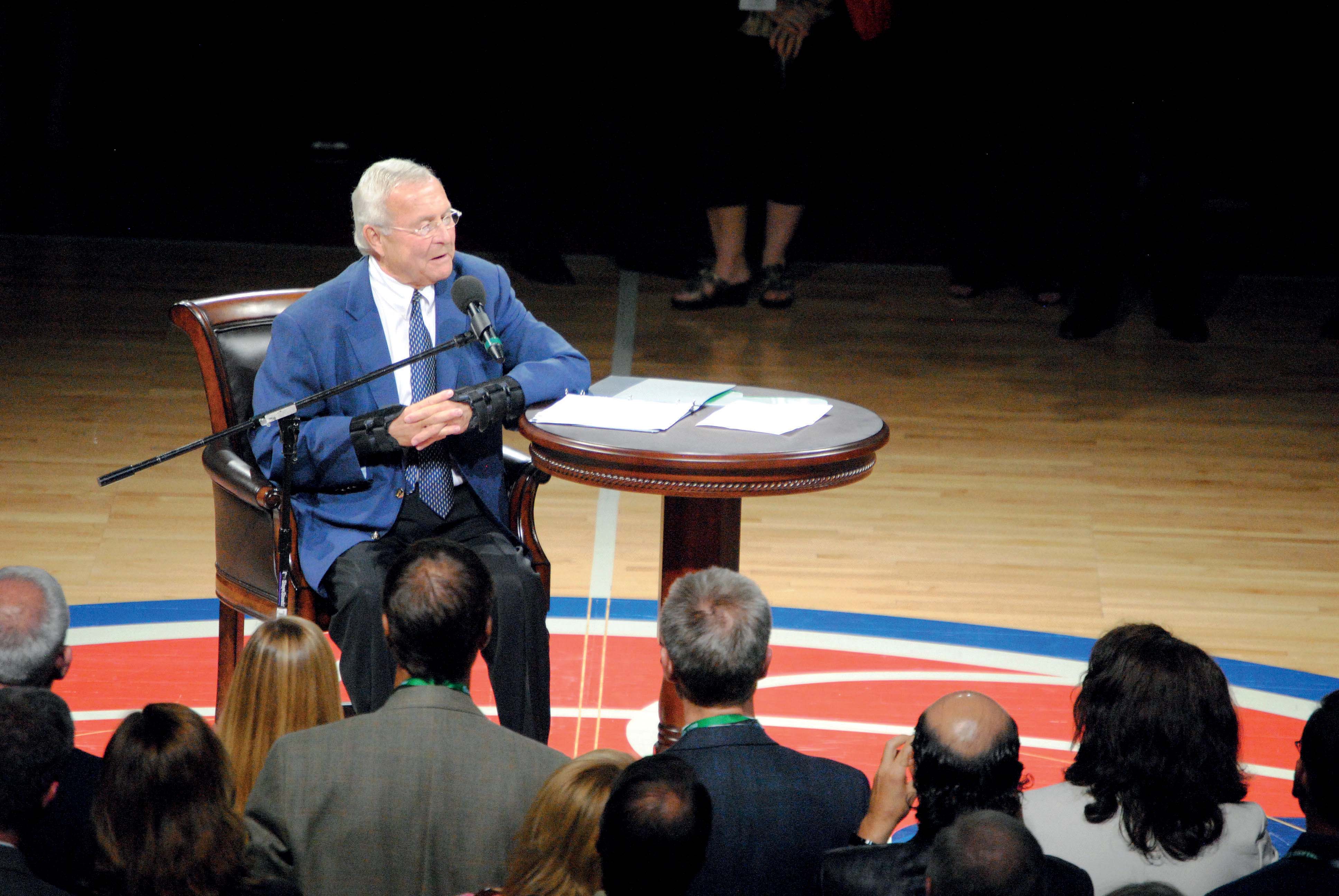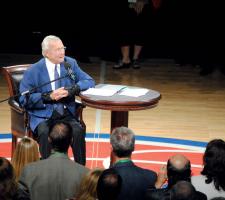
Drivers conventionally see parking as an isolated, often frustrating, action; but collectively their attempts to find a space impact hugely on traffic flows. But new analyses of parking events look set to deliver real benefits to motorists and cities alike.
Initiatives getting under way around the world are highlighting the advantages of connecting up parking events and – eventually - parked cars. The hoped-for results include not only enhanced urban mobility but also, potentially, the creation of a new kind of data platform with applications that could stretch well beyond the transportation sector.
In February 2014, county chief executive L Brooks Patterson, who had launched Automation Alley in 1997, set up a scheme to create communications connectivity between individual cars, and between them and the roadside or parking infrastructure, to make urban driving safer and more convenient.
One parking solution, developed with HERE (
“It knows how many spaces it has in total, and the number of cars occupying them, so it knows how many spaces are available at any point. Unfortunately, it doesn’t know where they are.
“Most of us are familiar with the experience of driving round and round and up and down a multistorey car park to find one of the last remaining bays. We can make a map of the building and its parking spaces, but GPS and the internet don’t work well indoors or underground.”
The 2014 ITS World Congress in Detroit showcased progress in work on bay occupancy monitoring in locations that lack communications connectivity because of the inhibitions of their physical structure. The Oakland County Connected Vehicle Task Force, formed following Patterson’s initiative, has joined with its commercial partners to demonstrate technology that can identify the position of an internally parked vehicle to an accuracy of less than 1m.
It deploys WAVE (wireless access in vehicular environments) - standard dedicated short-range communications technology operating within the enclosed structure to register bay occupancy or availability as vehicles cross a geofence. Once a car exits, the central system ‘reserves’ the vacated bay for the next arriving vehicle to ensure that it is not snatched by a second car while the first is still navigating towards it.
Paxgrid chief technology officer Martin Nathanson told ITS International: “The data uses a designated WAVE service channel to make its way to a server in the outside world.”
HERE is providing its mapping to support the technology, which Patterson sees as having the potential to become a central element in future city-wide connected vehicle systems. “My call for an ecosystem is a great challenge. Early testing by the task force and its partners indicates we are moving in the right direction and smart parking is just one of the many applications we will see.”
Task force chair Fred Nader sees a central issue as creating a viable business model. “The reason this has not yet been done on any mass scale is because the private sector needs to know it’s a good investment. We are optimistic that we can make the business case.”
Deputy county executive Matthew Gibb told ITS International that he expects a regional pilot during 2015/2016 with the deployment of the technology along an axis leading from central Chicago via Oakland to the University of Michigan at Ann Arbor. The latter is already a test zone in the US Department of Transportation’s connected vehicle programme.
The pilot will take in parking garages along the route. Gibb expects full operability by 2020, with wider roll-out beyond the county in a new government-to-government initiative of research collaboration.
Beyond transport
Meanwhile, computer giantScientists at the company’s Dublin and Zurich research laboratories are now investigating ways of exploiting such cars’ underused resources of battery power, information processing and storage, and sensing capabilities as elements in an innovative urban information delivery platform. Given the right connectivity, IBM sees networks of parked cars building up into a whole new, cost-effective type of data collecting and disseminating infrastructure.
Its research has already established that, while out, cars tend to stay parked for reasonable periods of time at specific places, offering the bonus of geolocational stability. In one exercise, scientists collected data from the 365 smart parking meters in Dublin and found that cars remained parked in the city centre for an average of 65 minutes.
Using such real world parking statistics, and modelling everyday situations, IBM believes that its proposal is both feasible and ready for deployment. Its research teams are planning to work with local governments, transportation agencies and the automotive industry to develop the new platform.
Robert Shorten, senior research manager with IBM Research Ireland, told ITS International: “The concept can extend to cars inside parking garages, where localisation is not so easy.”
He foresees approaching cars being able tap into such a network to find where and when they can park, on- and off-street, with supporting information on tariffs and time limits. “This is one of the use cases that we are working on, with a current demonstration project using the concept approach, which is in the process of patent application.
“Ubiquitous wifi could be achievable through the presence of parked cars, and their integration with fixed infrastructure networks to achieve massively dense coverage.” Among emerging markets for the resulting cost-effective networks he sees ‘mini-cities’ such as university campuses – “we are currently discussing the possibility of one such deployment.”
Potential uses
The average mobile phone uses almost half of its power in communicating with a cellular base station to keep the connection alive. Car batteries, combined withWhen the device user comes in range, this module will manage the connection. Depending on the extent of the network of connected cars and their battery levels, city-wide coverage could be feasible, believes IBM. Again, mobile devices’ processing activity could be transferred to a parked car’s central processing unit when they come within range of the network.
More ambitiously onboard vehicle sensors currently used primarily for driving safety and vehicle automation applications could adapt to take on additional, societal roles: for example in helping to locate a wandering dementia patient wearing a Bluetooth bracelet. In-vehicle Bluetooth devices could sense for a given identifying MAC (media access control) address which has already been trialled in Dublin.
Sensors could also detect and report gas leaks and communicate with each other to pinpoint the location and time of the event; and improve building security by detecting suspicious movements, for example, at night, and communicating with an internal security system.
Not least, vehicle data storage developed for multimedia and infotainment could make its content available for caching or sharing. Parked cars could create a wifi backbone that would send stored content, for example local information or area maps – to a user’s mobile device.
On the issue of battery use, says Shorten, “IBM has already developed smart collaborative algorithms to manage consumption levels, with load balancing to share the calls on these. We are currently investigating specific impacts. Car owners will be able to specify the maximum battery capacity that is available for such services, to be managed in collaboration with that of other vehicles.”













